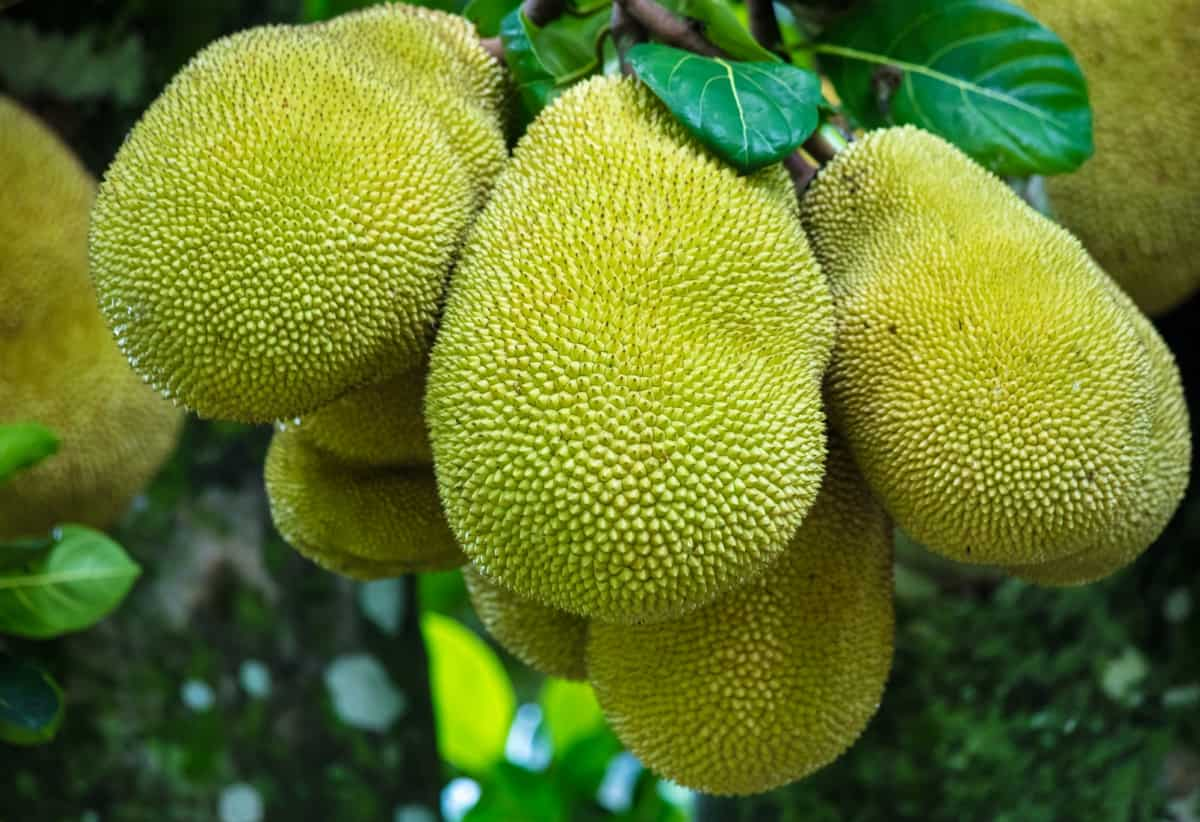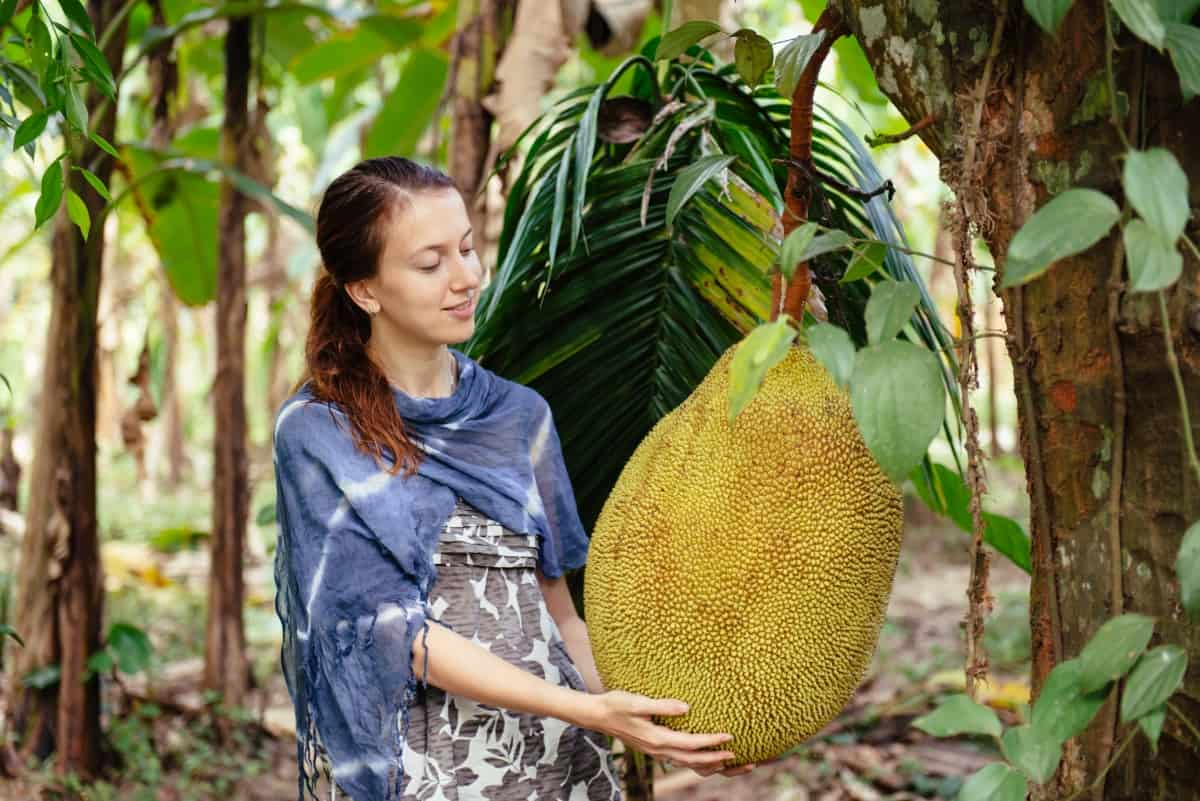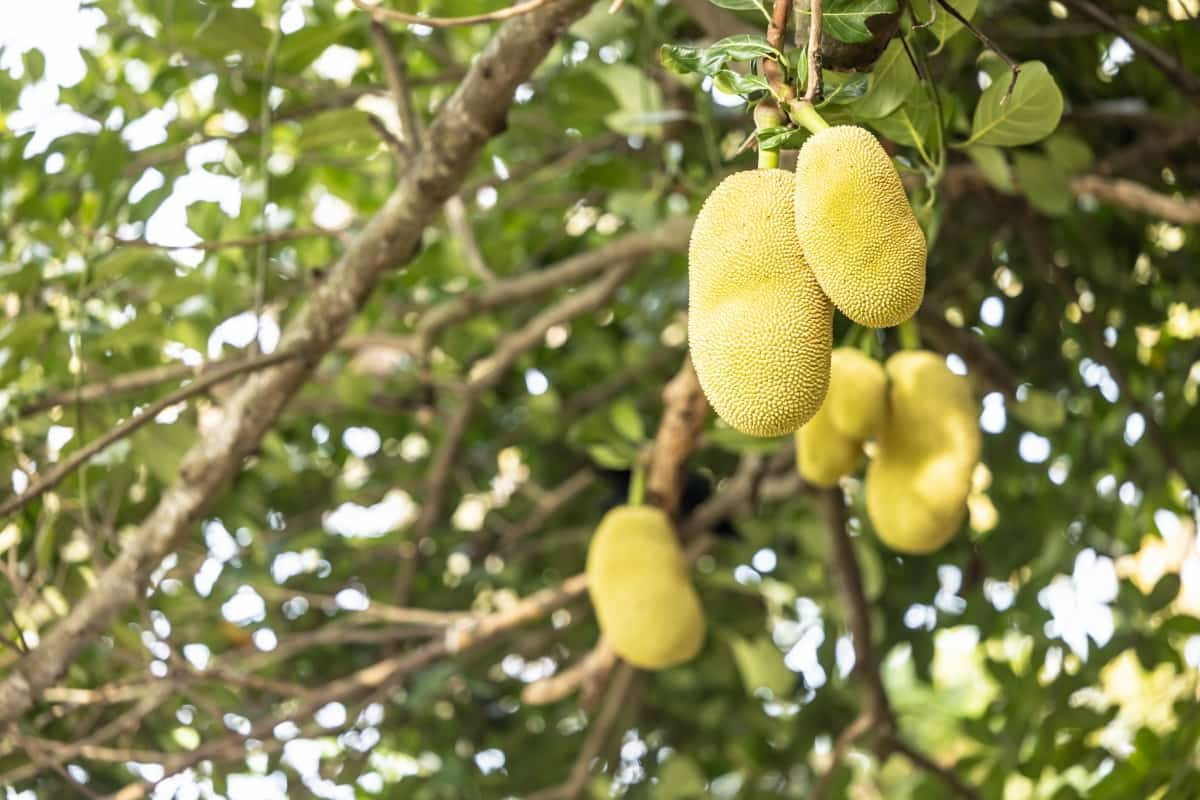Like many crops, jackfruit trees can be susceptible to various pests that can damage the fruit and reduce the yield. While chemical pesticides are commonly used to control these pests, there is a growing interest in natural and organic methods for pest management. These methods are not only environmentally friendly but also promote the overall health of the jackfruit tree and the surrounding ecosystem. In this guide, we will explore how to control jackfruit pests using natural and organic treatments.

How to Control Jackfruit Pests Naturally
Jackfruit Pests: Identifying the Most Common Pests and Their Impact on Your Crop
Shoot and Fruit Borer: The larvae of various moths, such as the jackfruit shoot and fruit borer, can infest the tender shoots and fruit of the jackfruit tree. These pests can bore into the fruit, causing damage, and may result in fruit drop or reduced fruit quality.
Spittle Bugs: Spittlebugs are small insects that produce a frothy substance around themselves for protection. While they don’t directly damage the fruit, spittlebugs can feed on plant sap and potentially weaken the tree over time.
Mealy Bug: Mealybugs are small, soft-bodied insects that feed on plant sap. Mealybugs can weaken the tree by sucking out the sap, and their presence may lead to leaf wilting and reduced fruit quality.
Bud Weevil: Bud weevils are beetles that infest the buds of jackfruit trees. They can damage the buds and prevent fruit development, reducing fruit yield.
Bark-Eating Caterpillar: Bark-eating caterpillars, like the teak defoliator caterpillar (Hyblaea puera), can consume the bark and leaves of jackfruit trees. These pests can defoliate the tree and cause substantial damage, potentially reducing fruit production.
Aphid: Aphids are tiny, soft-bodied insects that suck plant sap. Aphids can weaken the tree, deform leaves, and transmit plant viruses. They are more of an indirect threat to jackfruit.
Leaf Webber: Leaf webbers are moth larvae that create protective webs on leaves. While they don’t directly target fruit, leaf webbers can defoliate the tree, reducing its overall vigor.
Using Neem Oil to Control Jackfruit Pests: A Safe and Effective Method
Neem oil disrupts the feeding and reproductive cycles of various pests like aphids, mealy bugs, and caterpillars while being non-toxic to humans, beneficial insects, and the environment. It should be applied as a foliar spray, coating the leaves and fruit surfaces to deter infestations. Regular use can help prevent and manage pest populations, ensuring healthier jackfruit trees and a bountiful harvest without synthetic pesticides’ harmful effects.
The Role of Beneficial Insects in Controlling Jackfruit Pests: Introduction of Predatory Insects
Beneficial insects are crucial in controlling jackfruit pests by acting as natural predators. Ladybugs, lacewings, and predatory beetles are among the key players introduced to combat harmful pests like aphids, mealy bugs, and caterpillars. These predatory insects feed on the pest populations, helping to keep them in check. A natural balance is achieved by introducing and maintaining a healthy population of these beneficial insects in the ecosystem surrounding jackfruit trees.
In case you missed it: How to Control Orange Pests Naturally: How to Get Rid of Them with Natural and Organic Treatment

Companion Planting: How Planting Certain Plants Together Can Deter Jackfruit Pests
Companion planting involves strategically planting certain species alongside jackfruit trees to deter pests and enhance overall ecosystem health. Marigolds, basil, and garlic emit natural compounds that repel jackfruit pests such as aphids, mealy bugs, and caterpillars. The scent and chemical compounds these companion plants produce act as a natural deterrent, reducing the likelihood of pest infestations. Additionally, some companion plants attract beneficial insects that prey on pests, further enhancing the ecosystem’s balance.
Crop Rotation: How Rotating Your Jackfruit Crop Can Help Control Pests
It is a farming technique where different crops are grown in succession on the same land. This practice can help control jackfruit pests by disrupting their life cycles and reducing their population build-up. By changing the crop planted in a specific area, pests that rely on jackfruit as their primary host are denied a constant food source. This breaks the infestation cycle and prevents pest accumulation in the soil. Crop rotation also enhances soil health and fertility, contributing to the overall resilience of the jackfruit trees.
Using Diatomaceous Earth to Control Jackfruit Pests: A Non-Toxic and Organic Method
Diatomaceous Earth (DE) is a non-toxic and organic method for controlling jackfruit pests. It consists of diatoms’ microscopic, abrasive remains, which can effectively deter crawling insects when spread around the base of jackfruit trees or on the fruit. DE physically damages the exoskeletons of pests like ants, aphids, and weevils, ultimately dehydrating and killing them. Regularly applying food-grade DE can help prevent and manage pest infestations while maintaining the integrity of the fruit and surrounding ecosystem, making it a valuable addition to organic pest control strategies.
In case you missed it: How to Control Peach Pests Naturally: How to Get Rid of Them with Natural and Organic Treatment

Traps and Barriers: How to Use Traps and Barriers to Control Jackfruit Pests
Traps and barriers are valuable tools for controlling jackfruit pests. Sticky traps near the trees capture flying insects like fruit flies and aphids, preventing them from reaching the fruit. Tree collars, made of plastic or cardboard, deter crawling pests such as ants and weevils by blocking their access to the tree canopy. In addition, netting can serve as a protective barrier to keep birds and larger insects away from the fruit. These methods act as physical obstacles, reducing pest damage and the need for chemical interventions.
Biological Control: How to Use Parasitic Wasps to Control Jackfruit Pests
Parasitic wasps are invaluable allies in controlling jackfruit pests. Species like Trichogramma and Braconid wasps target the eggs or larvae of pests like shoot borers and fruit flies. To utilize them, release adult parasitic wasps near infested jackfruit trees. These wasps lay their eggs on or inside the pest’s eggs or larvae, effectively parasitizing and reducing the pest population. This natural biological control method is safe for the environment and beneficial insects.
Integrated Pest Management (IPM): A Holistic Approach to Controlling Jackfruit Pests
It combines various eco-friendly techniques to control infestations effectively. IPM involves regular monitoring to assess pest populations, identify specific pests, and consider their life cycles. By integrating practices such as biological control with beneficial insects, traps, barriers, natural repellents, crop rotation, and proper sanitation, IPM minimizes reliance on synthetic pesticides. This holistic approach not only controls pests but also promotes the overall health and sustainability of the jackfruit ecosystem, ensuring a thriving crop while minimizing environmental impact.
In case you missed it: How to Control Apricot Pests Naturally: How to Get Rid of Them with Natural and Organic Treatment

Conclusion
Managing jackfruit pests through natural and organic treatments is a sustainable and environmentally responsible approach. By incorporating natural and organic control methods, growers can effectively deter pests while preserving the health of the trees and the surrounding ecosystem. This holistic approach safeguards the jackfruit crop and contributes to a greener and more sustainable agricultural landscape.
- Deworming Schedule for Dogs/Puppies: A Beginners Guide
- How to Prevent and Control Parasites in Goats
- Beneficial Insects in Pest Management
- Natural Solutions for Pest Control in Flower Gardens
- Types of Fungicides Used in Agriculture
- Common Issues in the Fruit Development Stage of Pomegranate Farming
- Fruit Development Issues in Papaya: Easy Solutions and Treatment
- Soil-Borne Diseases and How to Protect Your Plants
- Practices to Prevent Disease Spread in the Garden